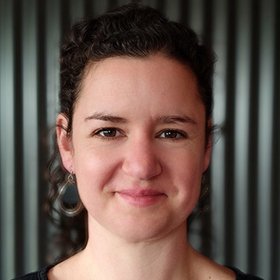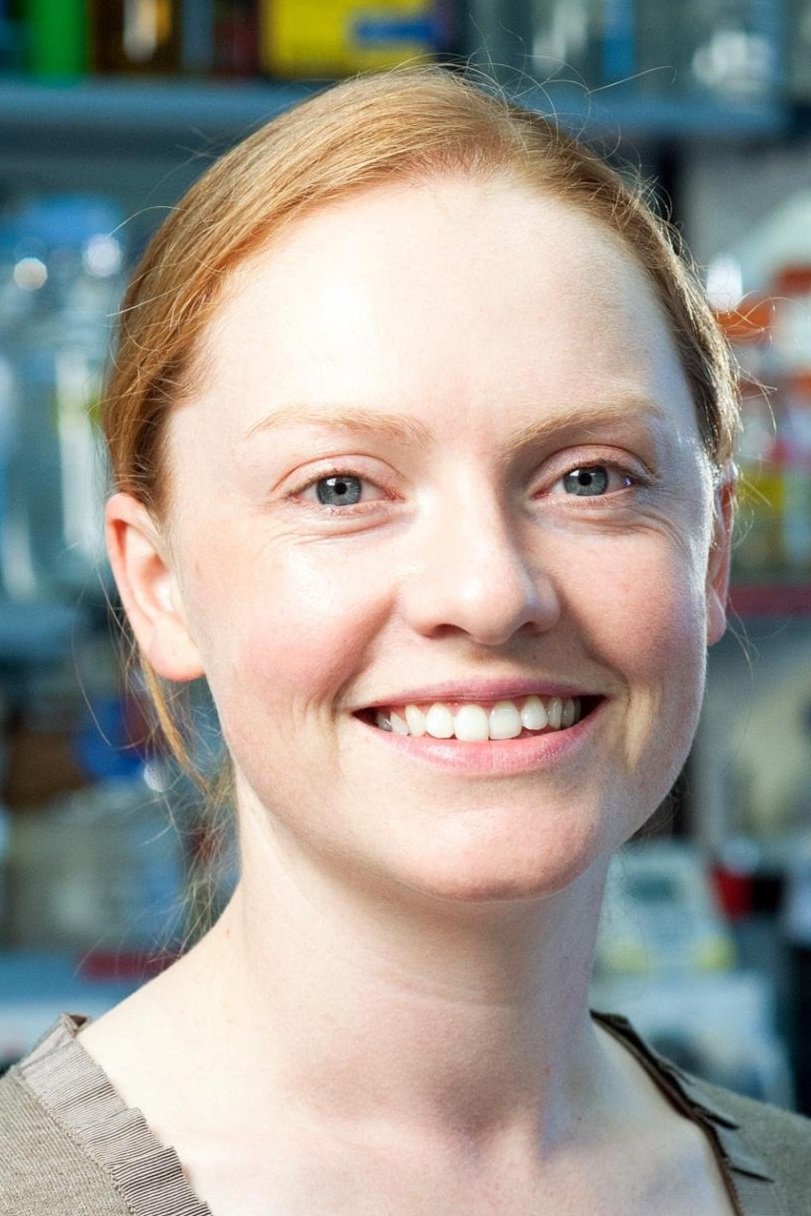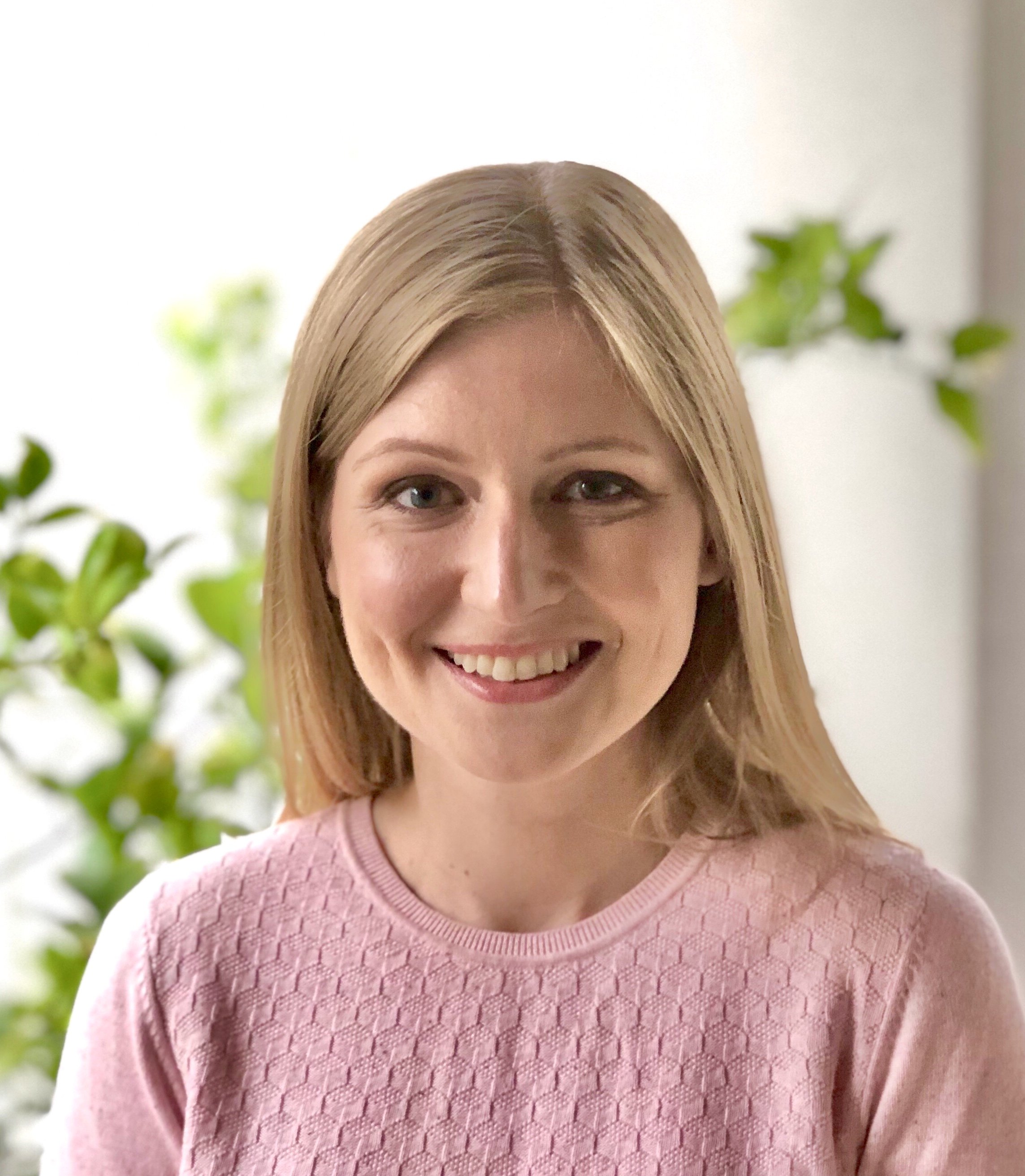ABACBS National Seminar Series
The ABACBS national seminar series aims to highlight the work of bioinformaticians across the spectrum of career stages, located in both urban and regional universities.
The seminars are held from 12-1pm Eastern Time on the third Tuesday of each month, via Zoom. Each seminar features two speakers, with each talk running for approximately 25 minutes, followed by 5 minutes of Q&A time.
Free registration to attend is required via https://abacbs.org/seminarzoom
The ABACBS National seminar series is organised by: Matt Field, Nicola Armstrong, A.J. Sethi, Aaron Darling and Tingting Gong.
2022 Seminar program
Upcoming sessions
NOVEMBER 15, 2022
Studying the interaction between SARS-Cov-2 and host using long -read nanopore sequencing
Prof. Lachlan Coin
Abstract: Better methods to interrogate host-pathogen interactions during Severe Acute Respiratory Syndrome Coronavirus 2 (SARS-CoV-2) infections are imperative to help understand and prevent this disease. Here we implemented RNA-sequencing (RNA-seq) using Oxford Nanopore Technologies (ONT) long-reads to measure differential gene expression, transcript polyadenylation and isoform usage of both the host and pathogen within various epithelial cell lines permissive and non-permissive for SARS-CoV-2 infection. SARS-CoV-2-infected and mock-infected Vero (African green monkey kidney epithelial cells), Calu-3 (human lung adenocarcinoma epithelial cells), Caco-2 (human colorectal adenocarcinoma epithelial cells) and A549 (human lung carcinoma epithelial cells) were analyzed over time (0, 2, 24, 48 hours). We found that viral sub-genomic expression patterns change over the course of cellular infection, and that RNA modifications vary between genomic and sub-genomic RNA but remain constant. On the host side, differential polyadenylation was found to occur in both infected Calu-3 and Vero cells during a late time point (48 hpi), with Gene Ontology (GO) terms such as viral transcription and translation shown to be significantly enriched in Calu-3 data. Poly(A) tails showed increased lengths in the majority of the differentially polyadenylated transcripts in Calu-3 and Vero cell lines (up to ~101 nt in mean poly(A) length, padj = 0.029). Of these genes, ribosomal protein genes such as RPS4X and RPS6 also showed downregulation in expression levels, suggesting the importance of ribosomal protein genes during infection. Furthermore, differential transcript usage was identified in Caco-2, Calu-3 and Vero cells, including transcripts of genes such as GSDMB and KPNA2, which have previously been implicated in SARS-CoV-2 infections. Overall, these results highlight the potential role of differential polyadenylation and transcript usage in host immune response or viral manipulation of host mechanisms during infection, and therefore, showcase the value of long-read sequencing in identifying less-explored host responses to disease. Finally I will discuss ongoing work using organoid models of infection.
About the speaker: Professor Lachlan Coin is a lead of the Computational Sciences and Genomics cross-cutting discipline at the Doherty Institute. Lachlan studied mathematics and physics at the Australian National University during his undergraduate degree. He obtained his PhD in Bioinformatics from the Wellcome Trust Sanger Institute and University of Cambridge in 2005. He then took up a position as Research Council UK research fellow in the Department of Epidemiology and Public Health at Imperial College where he investigated the role of genetic variation in complex disease. In 2012, he took up a research group leader position at the Institute for Molecular Bioscience at the University of Queensland where he was also an ARC Future Fellowship.
Detecting fusion genes with new resolution in long read transcriptome sequencing
Dr. Nadia Davidson
Abstract: Massively parallel short read transcriptome sequencing has greatly expanded our knowledge of fusion genes which are drivers of tumour initiation and progression. In cancer, many fusions are also important diagnostic markers and targets for therapy. Long read transcriptome sequencing allows the full length of fusion transcripts to be discovered, however fusion finding algorithms designed for short reads do not work on long read data due to the read length and errors. JAFFAL is one of the first pipelines to accurately discover fusions from long reads and I will show how it enables complex multi-breakpoint fusion transcripts to be found. Moreover, fusions can be identified in individual cells when JAFFAL is applied to data from new high throughput single cell long read sequencing protocols. One challenge with long read single cell transcriptome analysis is demultiplexing cellular barcode. I will also describe a recent tool we developed, Flexiplex, which is a versatile and lightweight sequence searching and demultiplexing tool for omics data. It is based on Levenshtein distance and thus allows error-tolerant matches. I will highlight some applications we are using Flexiplex for within our group such as identification of driver variants in cancer cells in both long and short read single cell data.
About the speaker: Dr. Nadia Davidson is a Lab Head at WEHI. The Davidson laboratory use computer science and mathematics to analyse complex gene sequencing data, to better understand disease and development. The transcriptome, which is the molecular read out of the genome, can be altered in disease. A focus of our research is developing novel bioinformatics methods to identify changes to the transcriptome in cancer, using data generated by contemporary and emerging transcriptome sequencing technologies.
OCTOBER 18, 2022
Network analysis of microRNA/transcription factor-driven cascade reveals the regulatory structure
Dr. Katherine Pillman
Abstract: Many biological systems are underpinned by key regulatory relationships between a microRNA and transcription factor pairs. The miR-200:ZEB1 pair of gene repressors are a classic example of these, forming a negative feedback loop that controls a huge cascade of gene expression changes in cancer progression. The regulatory structure of this cascade is not well understood. We have explored this using a combination of linear modelling of gene expression and a co-expression network analyses derived from a cell line model with a disabled regulatory circuit.
About the speaker: Dr Katherine Pillman is the Royal Adelaide Hospital Florey Fellow and Lead Bioinformatician in the Gene Regulation Section at the Centre for Cancer Biology in South Australia. Her research focuses upon understanding gene regulation and the transcriptome in cancer, particularly the roles of microRNAs, circular RNAs, and transcription and alternative splicing factors.
Navigating heterogeneity in single cell data
Dr Belinda Phipson
Abstract: Advances in single cell technologies are revolutionizing molecular biology. As single cell technologies have matured, applications have shifted from simply characterizing cell types in a sample to comparing cellular composition and gene expression of samples between experimental conditions. However, the analysis of single cell data remains challenging as the data tends to be noisy, sparse, and prone to technical variation such as batch effects. The way that we account for and model variability in single cell data is key to robust and reproducible discoveries. In this talk I will describe our recently published method, propeller, that we developed for finding statistically significant shifts in cell type composition between groups of samples that leverages biological replication. I will show some benchmarking comparisons with other statistical frameworks, and how we applied propeller to single cell and spatial data. I will also briefly discuss some new work, including a project inspired by a recent hackathon that brought bioinformaticians and immunologists together.
About the speaker: Dr. Belinda Phipson is a lab head in the Bioinformatics Division at WEHI. The Phipson laboratory works on both novel bioinformatics methods development as well as collaborative analysis projects with scientists within and external to the Institute. A major research focus of the Phipson laboratory is on developing new bioinformatics methods for data generated from single cell technologies. We also work on genomic data generated from other high-throughput technologies including RNA-seq and DNA methylation. Our novel bioinformatics methods are implemented as publicly available open source software through the Bioconductor project.
SEPTEMBER 20, 2022
langevitour: smooth interactive touring of projections of scRNA-Seq data
Dr Paul Harrison, Monash Bioinformatics Platform
Abstract: langevitour presents smoothly animated, interactive 2D projections of high-dimensional data. What is the real geometry UMAP has merely hinted at in your scRNA-Seq data? What are the whiskers coming out of your clusters? Is a treatment having the same effect on different cell types? With langevitour you can interactively see the answers to these questions, and gain intuition about what is really going on in a high-dimensional dataset. Since the projections displayed by langevitour are linear, no non-linear distortion occurs as in UMAP. The display can rotate randomly, or a guide can be invoked to find an "interesting" projection of the data, or the projection can be manually controlled. langevitour is implemented in Javascript, allowing for a high frame-rate and responsive interaction. The projection path is generated using a "physics" engine based on Langevin Dynamics, and responds in real-time to user controls. langevitour is most easily invoked from R, and can be shared as static HTML generated using R Markdown.
Online interactive examples: https://logarithmic.net/langevitour/articles/examples.html
A pre-print describing the widget: https://www.biorxiv.org/content/10.1101/2022.08.24.505207v1
About the speaker: Paul Harrison has a PhD in Computer Science, and works for the Monash Bioinformatics Consortium at Monash University as a Research Fellow, providing bioinformatics support for researchers and developing software for the statistical analysis of high-throughput sequencing data. More information: http://monash.edu/bioinformatics; http://rnasystems.erc.monash.edu
Gene expression and chromatin accessibility at single cell resolution in lung alveolar stem cells with age and exercise
Dr Qing Wang, Victor Chang Cardiac Research Institute
Abstract: Aging is the progressive deterioration of cellular and organismal functions and the primary risk factor for many diseases. Exercise has been shown to extend lifespan and health span in both mice and humans, but little is known about how exercise impacts epithelial stem cell function in the lung. To address this, we use the mouse lung alveolar as a model system. Using single-cell technology, we investigate the molecular mechanisms underpinning the impact of aging and exercise on lung alveolar stem cells.
About the speaker: Dr. Qing Wang is a computational postdoctoral scientist at the Regulatory Systems Laboratory led by A/Prof Emily Wong at Victor Chang Cardiac Research Institute. Her research focuses on deciphering the impact of aging and exercise on lung alveolar stem cells using single-cell technology.
AUGUST 16, 2022
Exploring the cardiac spatial transcriptome in 3D and immersive environments
A/Prof. Mirana Ramialison, Murdoch Children’s Research Institute
Abstract: 1% of Australian babies are born with Congenital Heart Disease (CHD), manifesting as anatomical heart defects that are detrimental for the newborn. Despite its prevalence, the aetiology of more than 80% of CHD cases remains unknown, making diagnosis and evaluation of the risk of the disease inheritance difficult. Our team has a long-standing interest in identifying the specific gene sets required for the formation of a healthy heart based on the principle that perturbations in these genes will impair normal development, resulting in anatomical cardiac defects. Thousands of genes are expressed in the heart at any given time point during development, but which of these genes are critical for heart formation and play a significant role in CHD? To address this, we used a battery of spatially resolved transcriptome-based technologies ranging from spatial RNA-sequencing, Tomo-seq and Visium Spatial Transcriptomics to unravel novel spatial determinants of heart development and disease. For instance, we generated the first spatially resolved map of the murine heart (https://3d-cardiomics.erc.monash.edu/) and identified synexpression groups expressed in distinct regions of the heart, which revealed novel anatomical domains of co-ordinated expression. Here I will describe our spatial journey from surprising insights in benchmarking of emerging tools for spatial transcriptomics data analysis to developing visualisation tools for spatial data in virtual reality. Altogether, these pipelines allow to unbiasedly uncover novel genetic determinants of the cardiac gene regulatory network, and are applicable to other organs and congenital diseases.
About the speaker: A/Prof Ramialison received her Engineering degree from the University of Luminy, France, after which she worked as a programmer at the ERATO differentiation project in Kyoto. After obtaining her PhD in Developmental Genomics from the European Molecular Biology Laboratory in Heidelberg, Germany, she joined the Victor Chang Cardiac Research Institute in Sydney as an EMBO and HFSP Post-Doctoral Fellow. With an NHMRC/Heart Foundation Career Development Fellow, she relocated to Melbourne where she led the Systems Developmental Biology Laboratory at the Australian Regenerative Medicine Institute. She is now Head of the Transcriptomics and Bioinformatics Laboratory at the Murdoch Children’s Research Institute and Bioinformatics Facility Manager of the Novo Nordisk Foundation Center for Stem Cell Medicine, reNEW Melbourne.
Investigating Severe Asthma Through Urinary Metabolomics
Stacey Reinke, Edith Cowan University
Abstract: Asthma affects approximately 1 in 10 Australians and over 260 million people worldwide. It is a heterogeneous disease, both in terms of clinical presentation and response to treatment, rendering it difficult to accurately diagnose and effectively manage. In 2009, the pan-European Unbiased Biomarkers for the Prediction of Respiratory Disease Outcomes (U-BIOPRED) project was initiated. This project brought together over 40 academic and industry partners as well as patient organizations to identify molecular sub-phenotypes of severe asthma. The overarching aim of the U-BIOPRED study was to use multi-omics in a systems medicine approach to identify treatable asthma endotypes and novel therapeutic targets.
As part of this project, urinary metabolomics was performed. One of the challenges faced when using metabolomics to investigate asthma was patient treatment regimes. Patients with severe asthma often receive multiple treatments including oral corticosteroids (OCS). Treatment may modify the observed metabolic profile, rendering it challenging to investigate underlying disease mechanisms.
It this presentation, I will discuss the stratification approach taken to delineate the disease- and OCS-associated metabolic differences in severe asthma. I will then discuss a novel finding that identified a potentially actionable therapeutic target of severe asthma.
About the speaker: Dr Stacey Reinke is a Senior Lecturer in applied statistics and computational biology, and Deputy Director of the Centre for Integrative Metabolomics & Computational Biology at Edith Cowan University.
JULY 17, 2022
Spatial analysis to dissect the tumour immune microenvironment
Anna Trigos, Peter MacCallum Cancer Centre
Abstract: Cancer cells are not in isolation in a tumour. Rather, immune populations in the microenvironment modulate cancer growth and are key to therapies that harness immune cells to kill cancer cells. Despite a recent boom in spatial technologies, methods to quantitatively characterise the spatial distribution of cells in tissues are currently limited. My team works in the development of algorithms for the characterisation, quantification and classification of spatial patterns of cells across spatial proteomics and transcriptomics technologies, borrowing concepts from spatial statistics and ecology. We developed SPIAT, an R package for the analysis of spatial proteomics data, as well as spaSim, a simulator of spatial data for benchmarking.
In this talk I will present SPIAT and spaSim, as well as a case study in prostate cancer showing the power of identifying spatial patterns to understand the association between the microenvironment, patient genetic background, tumour characteristics, and patient prognosis.
About the speaker: Dr. Anna Trigos is a senior postdoctoral researcher at the Peter MacCallum Cancer Centre in Melbourne in the team of A/Prof. Shahneen Sandhu in Prof. Rick Pearson’s lab. Her research focuses on investigating cancer ecosystems based on evolutionary principles. In 2020 she was awarded two NHMRC Ideas grants and a CASS Foundation grant to investigate prostate cancer evolution and heterogeneity using single cell and spatial technologies and to develop spatial analysis methods.
New tools for genome-centric metagenomics
Ben Woodcroft, Queensland University of Technology
Abstract: Microbial communities are essential for the function of all ecosystems on Earth. Genome-centric metagenomics — the study of microbial communities using shotgun-sequencing — has become the primary method for us to discover species and their fundamental roles in ecosystems everywhere. In this seminar I will present several new bioinformatic methods from Rhys Newell, a recently submitted PhD student, that improve upon the state of the art in three critical steps in this process: short+long read hybrid assembly, clustering assembled contigs into sets representing draft genomes (“binning”) and strain-level resolution. Each of the methods is freely available including a comprehensive pipeline for recovering genomes from raw reads, https://github.com/rhysnewell/aviary.
About the speaker: As the informatics group leader at the Centre for Microbiome Research, Ben has the happy knack of enjoying most things but gravitates towards the development and application of bioinformatic techniques to study the microbial communities that drive the health of our planet. He currently holds an ARC Future fellowship and has published >200 free software projects.
JUNE 21, 202
Exploring the sex differences in myalgic encephalomyelitis/chronic fatigue syndrome (ME/CFS) in biobank data
Sara Ballouz, Garvan Institute of Medical Research
Abstract: Myalgic encephalomyelitis/chronic fatigue syndrome (ME/CFS) can be debilitating for the people suffering from it, with ~25% housebound. The disease mechanisms behind it are difficult to study in part due to the nature of fatigue: it is co-morbid with many other illnesses and thus hard to define and diagnose. Furthermore, several sets of disease definitions and diagnostic criteria are in use, obscuring the estimation of ME/CFS prevalence and diagnosis. However, one aspect universally agreed upon is the stark sex differences – with 75-85% of women among those afflicted. As ME/CFS and autoimmune diseases are both sex-biased, there is evidence that the immune system, along with pathogenic infections, may be involved in the cause and progression of the disease.
With data from Australian and US ME/CFS biobanks, we aimed to characterize ME/CFS and explore common features of the disease. We first report on the demographics of the individuals within the biobanks and replicate known characteristics of ME/CFS. We also observe that viral infections were the most common triggers for ME/CFS. We then applied a supervised simple linear regression classifier to test whether we could use phenotypic and survey features to classify individuals. We find that even broad quality of life scores are highly good predictors of disease status. Future work will improve on this classifier through an unsupervised approach to select better discriminatory features.
About the speaker: Dr Sara Ballouz is a Group Leader at the Garvan-Weizmann Centre for Cellular Genomics at the Garvan Institute of Medical Research. Her central scientific interest has been to understand the genetic architecture of disease. With data from the genome, transcriptome, epigenome and proteome increasing exponentially, robust tools and practices need to be established to analyse this deluge, in particular if to be applied to personalized medicine.
Single-cell eQTL mapping identifies cell type-specific genetic control of autoimmune disease
Joseph Powell, Garvan Institute of Medical Research
Abstract: The human immune displays substantial variation between individuals, defining how people vary in susceptibility to disease and respond to pathogens or cancer. Our knowledge of how genetic differences contribute to immune variation at the cellular level has been limited by the ability to generate sequence data from large numbers of cells and from enough individuals to test the relationship between genetic variation and cellular phenotypes. To address this, we developed the OneK1K cohort, consisting of single-cell RNA sequencing (scRNA-seq) data from 1.27 million peripheral blood mononuclear cells collected from 982 donors. We developed a framework for the classification of individual cells. By combining the scRNA-seq data with genotype data, we mapped the genetic effects on gene expression in each of 14 immune cell types and identified 26,597 independent cis–expression quantitative trait loci (eQTLs). We show that most of these have an allelic effect on gene expression that is cell type-specific. We show how eQTLs have dynamic allelic effects in B cells transitioning from naïve to memory states, identifying 333 eQTL whose allelic effects change as cells move across the B cell maturation landscape. Finally, we integrated genetic association data for seven common autoimmune diseases. We uncovered the causal route by which 305 loci contribute to autoimmune disease through changes in gene expression in specific cell types and subsets. Our work combines population genetics and scRNA-seq data to uncover drivers of interindividual variation in the immune system. Understanding the genetic underpinnings of immune system regulation will have broad implications in treating autoimmune diseases and infections, transplantation, and cancers.
About the speaker: Prof. Joseph Powell is Director of the Garvan-Weizmann Centre for Cellular Genomics, a Lab Head at Garvan Institute of Medical Research, and a Principal Research Fellow in the Faculty of Medicine, University of New South Wales. His Computational Genomics Laboratory focuses on demonstrating the genomic mechanisms by which loci contribute to complex human diseases, and working towards early stage diagnosis methods and targeted therapeutics.
MAY 17th, 2022
Characterising spatial heterogeneity in ovarian cancer
Elena Denisenko, Harry Perkins Institute of Medical Research
Abstract: Ovarian cancer ranks eighth in cancer deaths in women worldwide. High-grade serous ovarian carcinoma (HGSOC) is its most common and aggressive histologic subtype, which accounts for 70-80% of ovarian cancer deaths. Less than half of women with HGSOC survive beyond five years post diagnosis.
Genetic heterogeneity of tumour cells and microenvironment is believed to be the key determinant of treatment resistance and relapse in HGSOC. We use a combination of spatial and single cell transcriptomics (10x Visium and Chromium platforms) to examine cellular and genetic heterogeneity of HGSOC samples.
In this talk, I will discuss our work on eight HGSOC spatial transcriptomics samples and highlight the major findings which include co-existence of several tumour subclones in <5mm2 sections of HGSOC.
About the speaker: Dr Elena Denisenko is Bioinformatics Lead at the Systems Biology and Genomics Laboratory at the Harry Perkins Institute of Medical Research, The University of Western Australia.
Target Discovery and Validation with Bioinformatics in the Biotech Industry
Dr Monther Alhamdoosh, CSL
Abstract: The evolution of –omic technologies in the last two decades and the large abundance of publicly available data have dramatically improved our understanding of diseases and enabled scientists to identify better drug targets with higher success rates than ever. In this talk, I will explain the concept of therapeutic targets and describe the role of -omic technologies in deciphering the complexity of cellular regulation in diseases. Through couple of case studies, I will demonstrate how CSL uses -omic technologies and bioinformatics to identify drug targets and provide evidence to support their role in treating complex diseases in the pre-clinical and translational stages of the drug R&D pipeline. Finally, I will briefly describe how CSL uses statistical human genetics to support target validation, asset prioritization, patient stratification and matching patient-specific subtypes to most appropriate therapeutic.
About the speaker: Dr Monther Alhamdoosh is a scientific leader with more than 15 years of experience in Bioinformatics and Data Science. He is currently Director at CSL Limited and heads Bioinformatics & AI in the R&D Data Science group. He is also the Professional Bioinformatician Representative in the ABACBS Executive Board.
April 19th, 2022
A graph-based approach to capture clinical patterns of progression in melanoma patients
Dr. Ismael Vergara, Melanoma Institute Australia
Abstract: The clinical progression of patients with advanced-stage melanoma is complex. In this talk, I will present a graph-based approach that captures the spatial and temporal progression history of patients with advanced disease and effectively enables the systematic comparison of progression patterns across patients. I will show how this approach can be used to assess the impact of systemic therapies on the anatomical progression and survival of patients with metastatic disease. Finally, I will discuss applications of this methodology to other problems of clinical significance in melanoma.
About the speaker: Dr. Ismael Vergara is a senior computational biologist at Melanoma Institute Australia and research affiliate at The University of Sydney.
A multi-omics approach to understanding how the gut microbiota shape immune responses
Dr. Ryan Feargal, SAHMRI
Abstract: Mammals exist in a complex synergistic relationship with a micro-ecosystem composed of bacteria, archaea, viruses, and eukaryotes that produce an enormous repertoire of molecules, all of which collectively are referred to as its microbiome. The microbiome is critical to maintaining health throughout life contributing to protecting from infection, aiding in digestion, and regulating immune development. The gut microbiome is particularly importantly due to the high density of micro-organisms (> 1013 bacterial cells). In recent years it’s become apparent that the gut microbiome plays a role in regulating immune responses to vaccination.
In this talk, I will give an overview of the Antibiotics and Immune Responses study where we collected blood and stool samples longitudinally from 224 Australian infants to understand how the gut microbiome shapes responses to vaccination. We utilised a multi-omics approach incorporating shotgun metagenomics, total RNASeq, flow cytometry and responses to routine early life vaccination measured via ELISA. I will discuss the major findings, give an overview of the data integration techniques, point out some common pitfalls and discuss the approaches we use to identify relevant signals in high dimensional multi-omics datasets.
About the speaker: Dr Ryan is a senior post-doctoral fellow in the South Australian Health and Medical Research Institute and Flinders University. He holds a BSc. in Microbiology, MSc. in Bioinformatics and completed his PhD studying the human microbiome in 2017. Currently his research focuses on using multi-omics technologies to understand how commensal and pathogenic micro-organisms interact with the host.
















